2024 Regional Meeting - Abstracts & Speakers
Host for the 46th Annual Meeting and Symposium of the Antenna Measurement Techniques Association (AMTA)
Save the Date for the 46th Annual Meeting and Symposium of the Antenna Measurement Techniques Association (AMTA)! To be held at the Northern Kentucky Convention Center in the greater Cincinnati, OH, USA area from October 27 – November 1, 2024.
Challenges in Automotive Antenna Design and Testing
Automotive safety and connectivity are experiencing rapid transformation with the advent of Global Navigation Satellite Systems (GNSS), Cellular 5G, and Vehicle-to-Everything (V2X) technologies. The vehicle-level antenna performance is an important aspect in the overall performance of these wireless technologies as they receive signals from satellites, terrestrial towers, other vehicles, and roadside units. This presentation is aimed at covering the performance requirements, designs, and vehicle-level radiation pattern validation measurement challenges for GNSS, V2X and Cellular 5G antennas in the automotive sector. It is important to establish suitable measurement error criteria and certification processes for automotive antenna test facilities for antenna pattern measurements as no industry or federal standards for the United States’ automotive industry currently exists. Automotive antenna measurements are complex due to vehicle characteristics (weight, size, and materials) and range architectures (indoor/outdoor, free space/conductive ground plane, weight limitations, dynamic range, centering capability, etc.). A coordinated effort to establish a measurement campaign would benefit original equipment manufacturers (OEMs), Tier I suppliers, Tier II suppliers and industry standards development organizations for the automotive and cellular industries such as SAE International, 5G Automotive Association (5GAA) and Cellular Telecommunications Industry Association (CTIA).
Mode Filtered Site VSWR for Above 18 GHz EMC Site Evaluation Using Compressed Sensing
This presentation delves into the intricacies of EMC test site evaluation, with a specific focus on challenges beyond 18 GHz. While Site Voltage Standing Wave Ratio (SVSWR) standards have proven effective within the 1 GHz to 18 GHz range, their limitations become more apparent at higher frequencies. The discussion centers on introducing the Cylindrical Mode Filtered SVSWR methodology, aiming to overcome these challenges. A recent advancement in this methodology involves employing Compressed Sensing (CS) algorithms for the accurate computation of Cylindrical Mode Coefficients (CMCs). Departing from traditional reliance on equally spaced angular sampling, this presentation broadens the mode computation to accommodate under-sampled data below the Nyquist rate and on an unequally spaced abscissa. This brings a dual benefit – reducing data acquisition time and significantly relaxing the position precision requirements of turntables. The effectiveness and validity of this enhanced approach are illustrated through measured results, providing insights into its practical implications for high-frequency EMC testing.
Explorations in Radar Scattering (A LIVE Demonstration)
In the spirit of London’s Royal Institute Lectures, view an entertaining and informative demonstration of electromagnetic scattering while enjoying the afternoon refreshment break. Radio Frequency (RF) scattering, commonly measured in terms of an object’s Radar Cross Section (RCS), is most often associated with the defense applications. However, the measurement of RCS finds uses over an incredibly wide range of applications including automotive anti-collision systems, air traffic control radar, weather tracking, and radar navigation, to name a few. This demonstration will take you through the measurement setup and calibration to exploring different scattering phenomenology using a variety of interesting scattering objects. On the way you’ll see the usefulness of various processing and visualization tools in understanding the measured RCS data. This demonstration is just one of many presented during the popular AMTA Boot Camp. Attend the AMTA 2024 Boot Camp on Sunday, October 27, in Cincinnati, Ohio to learn more!
General RF Measurements
Whether you're conducting tests on handheld devices, advanced electronically scanned arrays, automotive communication and radar equipment, or EMC antennas, understanding fundamental measurement concepts is crucial for accurate RF characterization. This lecture on General RF Measurements is excerpted from AMTA's highly regarded 'Boot Camp', held every other year as a prelude to the annual fall AMTA Symposium.
This presentation will delve into common principles underlying RF measurements across various domains, including OTA, RCS, EMC, and antenna characterization. It imparts foundational knowledge applicable to diverse measurement scenarios. Beginning with an overview of RF measurements in component, material, and antenna contexts, the presentation progresses to explore practical considerations within the test environment. This includes fundamental principles of RF measurement systems and equipment, as well as strategies for optimizing signal integrity by balancing dynamic range, sensitivity, and IF bandwidth.
In addition, the discussion addresses challenges inherent to the test environment while highlighting the advantages offered by alternative RF solutions. Attendees will gain insights into mitigating measurement complexities and harnessing the full potential of RF measurement equipment.
Was it the Radar? Respectfully Revisiting the 1967 US Navy USS Forrestal Carrier Disaster
In 1967, while on patrol in the Gulf of Tokin, the United States Navy Carrier USS Forrestal (CVA-59) was preparing for wartime missions over North Vietnam. At 10:45 am local time, the ship was preparing to launch more than 20 fully armed A-4 Skyhawk and F-4 Fighter jets, all fully fueled and armed with a mixture of iron bombs and Zuni rocket launchers. At 10:51 am, an un-commanded F-4 Zuni Missile launched on the deck, striking a neighboring A-4 and starting a fire and series of secondary explosions. Quenching the fire nearly capsizes the ship, which is ultimately saved through the heroics of the sailors who served aboard the Forrestal. Although the US Navy conducted an extremely thorough accident investigation, hundreds of follow-up technical articles in the aerospace and NASA literature, including current EMI design books, blamed the initiation event on EMI from the on-board AN/SPS-43VHF search radar. But is that what really happened?
This presentation is aimed at correcting the record regarding the accident’s root cause. It is with great reverence that I humbly dedicate this work to the families, relatives, and friends of the 134 sailors killed and 167 severely wounded on July 29, 1967. The bravery and heroism of the surviving sailors who risked their lives to save 5,400 souls by quenching the fire and preventing the carrier from capsizing cannot possibly be overstated.
Application of ℓ₁ Minimization Techniques to Radar Cross-Section and ISAR Imaging Measurements
Inverse synthetic aperture radar (ISAR) imaging is a powerful tool for analyzing radar cross-section (RCS) measurements of complex targets. In particular, the ability to extract portions of an ISAR image and reconstruct their associated RCS can provide insight into the individual scattering sources comprising the target’s signature, as well as the ability to remove undesired contamination such as clutter and noise from the data. Unfortunately, while analytically elegant and computationally efficient, conventional ISAR image edit and reconstruction (IER) techniques suffer from errors in the reconstructed RCS due to “edge effects” from the editing masks, particularly when the target’s scattering sources are not well-resolved or when the contamination is smeared throughout the image. In this talk, we present the use of ℓ₁ minimization techniques to overcome these and other shortcomings of conventional ISAR IER methods. We begin with a review of the RCS measurements and ISAR imaging, followed by a brief discussion of ℓ₁ minimization and its ability to find “sparse” representations for measured data. This is followed by examples of how the application of ℓ₁ minimization to ISAR measurements can provide enhanced RCS reconstruction of individual target scattering sources and improved isolation of contamination from undesired error sources.
Innovations & Trends in Antenna Measurements – Recent Advances in Robotic Antenna Measurements
Traditional antenna test facilities are typically designed with a specific measurement application in mind, and as a result these facilities tend to be comprised of single fixed measurement geometry. However, modern antenna measurement ranges employing multi-axis robotic positioners provide a near limitless degree of re-configurability in terms of measurement types and scan geometries. This drives an ongoing need to evaluate each unique setup and application. This previously unimaginable flexibility offers new opportunities for the improvement of safety, measurement quality and reduction of measurement uncertainties. These new robotic systems are capable of acquiring large amounts of special data allowing for the implementation of advanced post processing techniques. Model based Systems Engineering and development (MBSE/MBD) approaches can be employed to dramatically reduce the time, effort and cost associated with the test development and validation phases of a given program. MBSE tools can also be used to optimize test configurations to greatly reduce measurement uncertainties and simulate measurements. This presentation provides an overview of how these engineering techniques are being harnessed during the implementation of a new dual multi-axis robotic antenna test system.
Distributed Antenna Arrays: Challenges and Applications in Microwave Sensing and Communications
Research on cooperative technologies for distributed wireless systems has focused on increasingly precise coordination between networked nodes. Coordination at the level of the radio frequency wavelength supports coherent operations, such as distributed beamforming, which has the potential to lead to significant advances in communications and sensing in future systems. Wavelength-level distributed array coordination requires accurate estimation and control of the electrical states of individual elements in the network, including wireless time synchronization, frequency alignment, and phase coherence through high-accuracy relative range estimation. In this talk I will discuss the challenges involved in distributed phase-coherent coordination of wireless systems and our group’s research on technologies that address these challenges. I will present recently developed approaches to high-accuracy coordination of time, frequency, and phase, and will present recent experimental implementations of distributed beamforming systems based on these technologies. Applications of distributed antenna systems are many, and in this talk I will present recent research efforts using spatially-diverse electromagnetic systems for new approaches to microwave sensing, radar imaging, and wireless communications.
Challenges (and Solutions!) in Modern Vehicular Measurements
This presentation offers a comprehensive overview of antenna testing on ground-based vehicles, spanning historical developments, current advancements, and future prospects. We begin by exploring the evolution of antenna testing requirements, emphasizing how historical challenges and solutions have influenced today's practices. The focus then shifts to contemporary needs, highlighting the latest technological advancements in vehicle communication systems, such as GPS, V2V communications, and cellular connectivity, alongside current regulatory and performance standards.
The presentation concludes with a forward-looking perspective, speculating on future requirements influenced by emerging technologies, including 5G, autonomous vehicles, and cybersecurity measures, and their impact on antenna testing protocols. By comparing standardized and unique testing solutions, we illustrate the ongoing evolution of industry standards and innovative approaches to meet these emerging challenges. This session aims to provide attendees with a thorough understanding of the state-of-the-art in antenna testing for ground-based vehicles, equipping them with insights into navigating the complexities of this dynamic field.
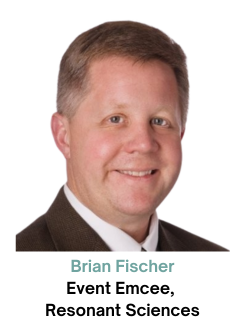

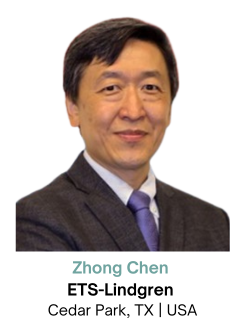
.png)
.png)
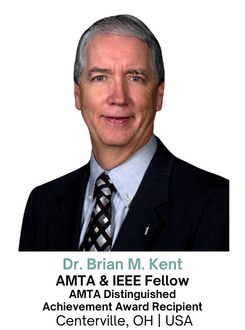
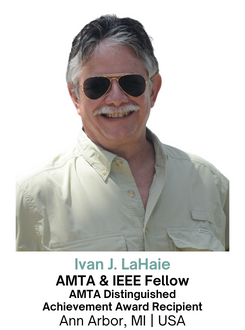
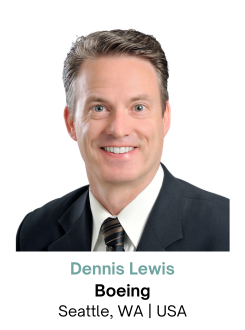

.png)
